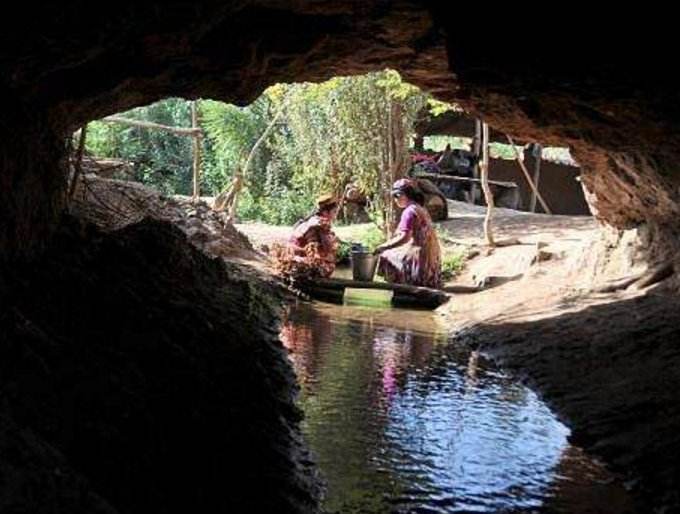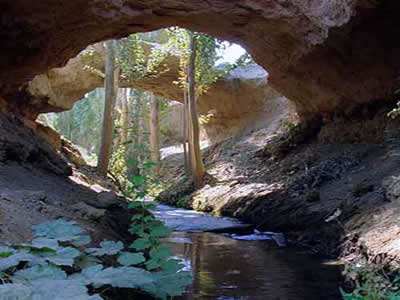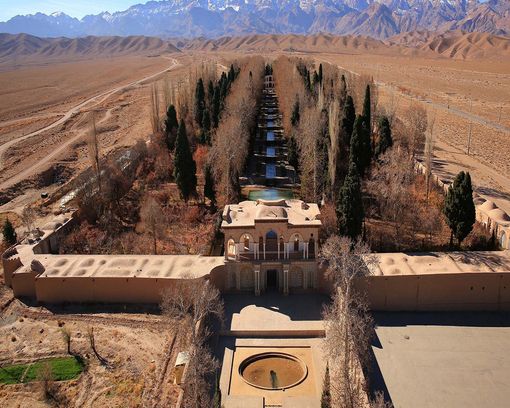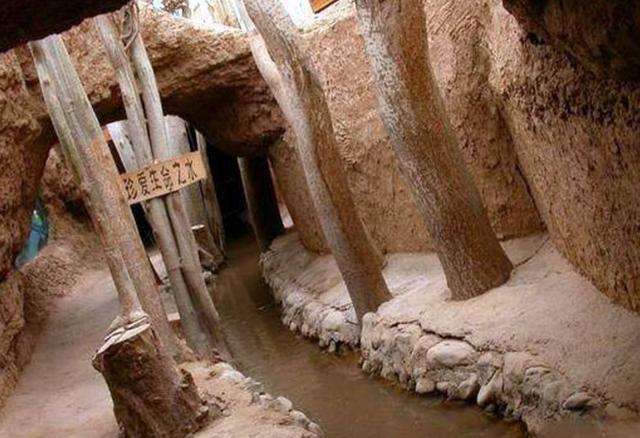A Cool Underground World
4 min readLooking from a high point at Erpu Township in Komul and Singgim Township in Turpan, you would find that the ground is covered with a honeycomb of dense holes. These holes are actually the famous karezes. The aboveground parts are holes, but the underground part is actually a cool world. Karez is called by geographical experts as “underground canal”, which carries underground water to the farm above the ground. For thousands of years, karezes have been acting as the blood vessels of the Xinjiang oasis, nourishing the land of Xinjiang and the people in the Western Regions.

A karez
Digging a karez
Karez, the Great Wall and the Beijing-Hangzhou Grand Channel are acclaimed as the three great ancient projects of China. Karez in Xinjiang has a history of at least four thousand years. So far, karez is still an important form of farming irrigation in Turpan and Komul of Eastern Xinjiang, Hotan of Southern Xinjiang and other places. But now folk artisans who are familiar with karez digging skills are becoming less and less, which has posed a threat to the inheritance of karez digging skills. In the words of Abuduhasim, a local Uygur young man, he was brought up drinking the water from karez, but he admitted honestly that he did not know the karez digging skills because “Most of the old men who had dug karezes had passed away”.
We chose to survey karez digging skills in Aktam Village of Singgim Township in Turpan.

This mini oasis, in some sense, can be called the karez demonstration village. Mamat Namet Yakup Azul, and Kadir Tuniyaz were the famous karez skills bearers. I didn’t know how many karezes they had dug along Mt. Tianshan. In their words: “A little less than our age.”
The karezes in Turpan are the most famous in Xinjiang. There are total extant 1,108 karezes in Turpan, including 278 karezes with water, with an annual runoff volume of 294 million cubic meters. It is the source of life for the oasis.
Generally it would take a few months to a dig a karez. He pointed to the leg and said, “We all have rheumatism, so we can’t show you.”

According to him, before digging karez, someone who had considerable experience in digging karezes would go to the field to select a location for the karez and then assess where the underground water sources exist. The karez expert would decide the direction by surveying the terrain and determining the distance from the nearby river or lake. The growth of vegetation, proper slope of the closed underground conduit and direction of the surface water and other factors would be important as well. When they start the work, laborers would first dig a 3-to-4-meter-deep pothole. If underground water were found they would dig another deeper pothole 20 meters from the first one in the upper reaches of the water, at general gradient of 1/40 or so, which varies according to the specific terrain.
If underground water was also found in the second pothole, a third deeper pothole would be dug 20 meters down from the second one. The three potholes would be in line.The location of the karez would be correct if underground water was found in the third pothole.

More potholes would be dug in the same method until the water reached its required amount.
The word karez appeared for the first time in the Spring and Autumn and Warring States periods(770 BC to 221 BC) In the book of Zhuangzi, there was a phrase, “Only you haven’t heard about the frog in the kanjing (well).” The document of Xizhou of the Tang Dynasty has a description of humajingqu(well canal). During the third year of Wanli period of the Ming Dynasty (1575 AD), Shi Maohua wrote in the On Turpan Coming to Express Gratitude and Paying Tribute to the Ming Government regarding “yakanr”(well canal). It was called kajing during the reign of Emperor Qianlong in the Qing Dynasty. The process of evolution for the word karez could be summed up as follows: jing(well(during the Zhou Dynasty)—kanjing(the Warring States Period to the Han Dynasty)jingqu(Tang Dynasty to Yuan Dynasty)-kajing (Qing Dynasty)-kanrjing (karez)(modern times). There are three views about the origin of the karezes in Turpan. The first one is that it originated from the well canal in the Central Plain during the Han Dynasty. Wang Guowei, the famous scholar of the Qing Dynasty pointed out in Study on the Well-Ditches in the Western Regions: The karezes in Xinjiang had emerged in the Han Dynasty of 2,000 years ago. It originated from the well canal in the Central Plains The second view is that karez originated from Central Asia and then gradually spread eastward to Turpan. The third view is that karez originated in Turpan. Some believe that the ancient Turpan people, of various ethnic groups, created karezes, during the long process of production, according to the climate conditions in the area that featured high temperatures with little rainfall and the terrain of Turpan. The karez petrogram discovered in the 1980s pushed the origin of karez to an earlier period, and more scholars tend to believe that karez originated in Turpan.








